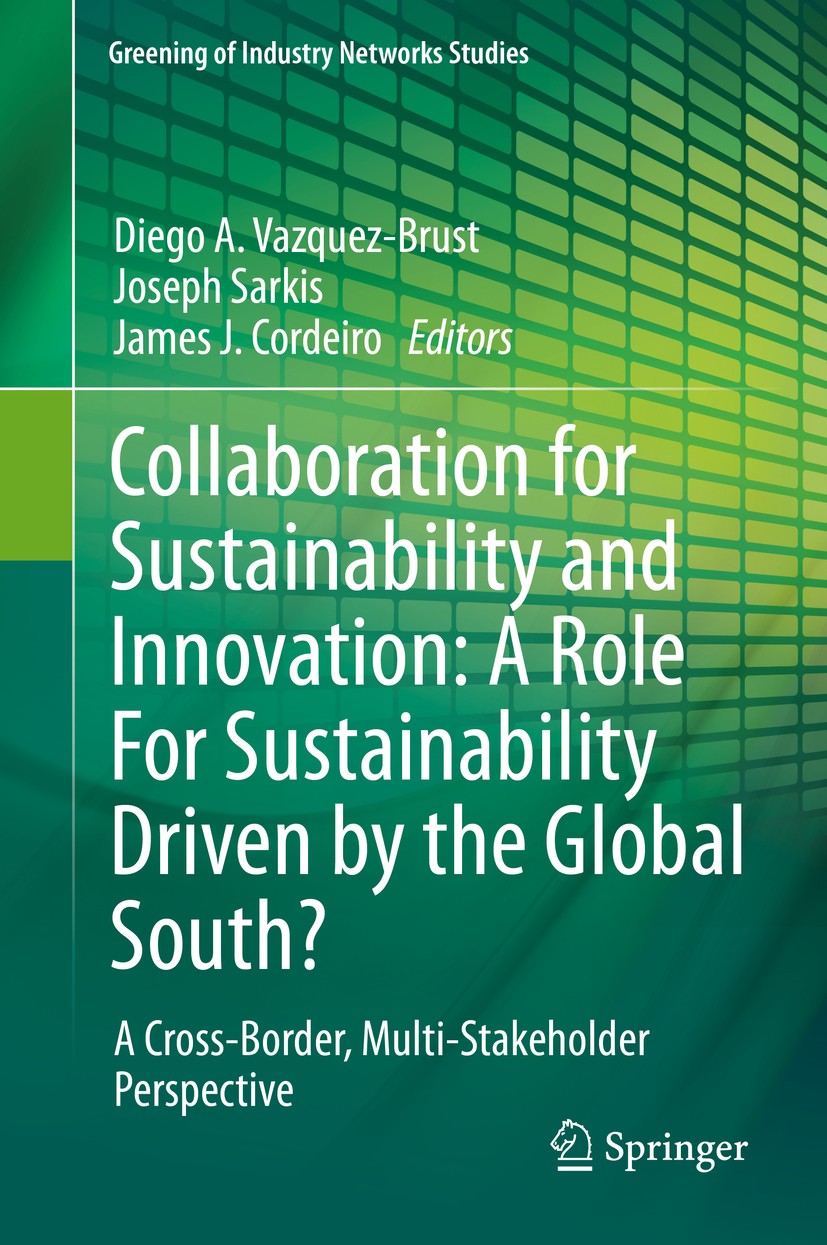| 书目名称 | Collaboration for Sustainability and Innovation: A Role For Sustainability Driven by the Global Sout |
| 副标题 | A Cross-Border, Mult |
| 编辑 | Diego A. Vazquez-Brust,Joseph Sarkis,James J. Cord |
| 视频video | http://file.papertrans.cn/230/229382/229382.mp4 |
| 概述 | Provides tools and models for cross-border collaboration for innovation and sustainability, especially building on models developed in the South that are transferable to the North.Applies the tools of |
| 丛书名称 | Greening of Industry Networks Studies |
| 图书封面 |  |
| 描述 | A number of arguments are made by an international group of authors in this though provoking book about an understudied and socially important context. A future in which financial wealth transfers across the North-South divide from richer to poorer countries is far from sufficient for the relief of poverty and the pursuit of sustainability. Caution must be taken when growth is achieved through the liquidation of the natural wealth of poorer nations, in order to maintain a global economic status quo. Neither poverty reduction nor sustainability will ultimately be achieved. The financial collapse and social upheaval that might result will make the most recent economic downturn look trivial by comparison. What is more urgently needed instead, as argued in this book, is collaboration for sustainability and innovation in the global South, especially building on models originally developed in the South that are transferable to the North. In pursuit of a sustainable and more equitable future, the book examines such topics as Cross-Border Innovation in South-North Fair Trade Supply Chains; Potential Pollution Prevention Programs in Bangladesh; Digital Literacy and Social Inclusion in the S |
| 出版日期 | Book 2014 |
| 关键词 | South-North collaboration; cross-border innovation; equitable futures; multi-stakeholder; sustainable de |
| 版次 | 1 |
| doi | https://doi.org/10.1007/978-94-007-7633-3 |
| isbn_softcover | 978-94-024-0765-5 |
| isbn_ebook | 978-94-007-7633-3Series ISSN 2543-0246 Series E-ISSN 2543-0254 |
| issn_series | 2543-0246 |
| copyright | Springer Science+Business Media Dordrecht 2014 |
 |Archiver|手机版|小黑屋|
派博传思国际
( 京公网安备110108008328)
GMT+8, 2025-12-14 14:35
|Archiver|手机版|小黑屋|
派博传思国际
( 京公网安备110108008328)
GMT+8, 2025-12-14 14:35


